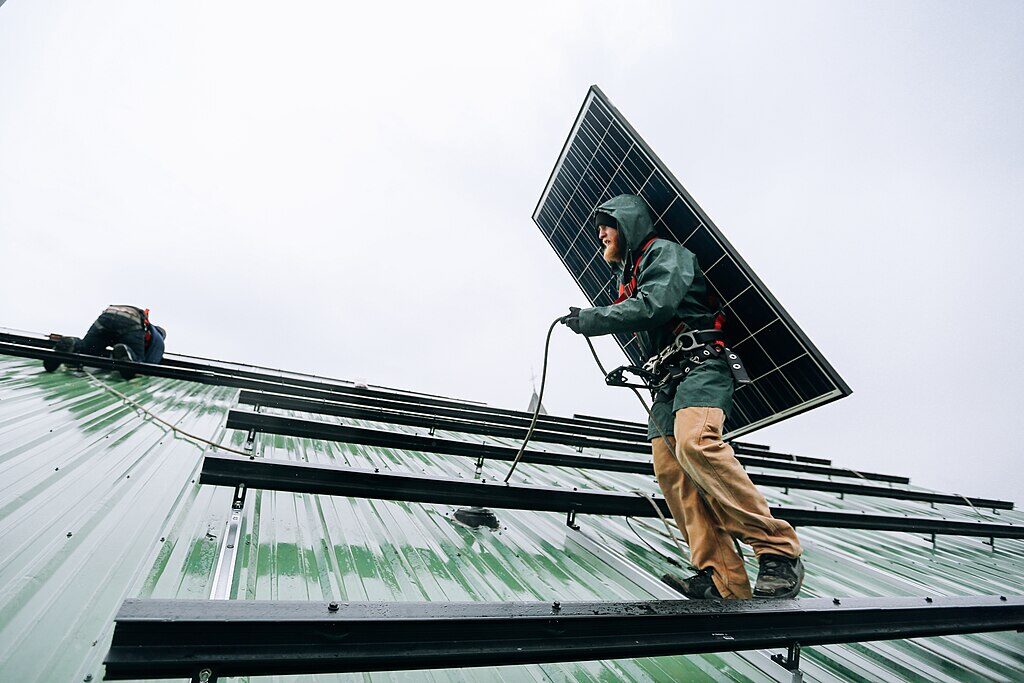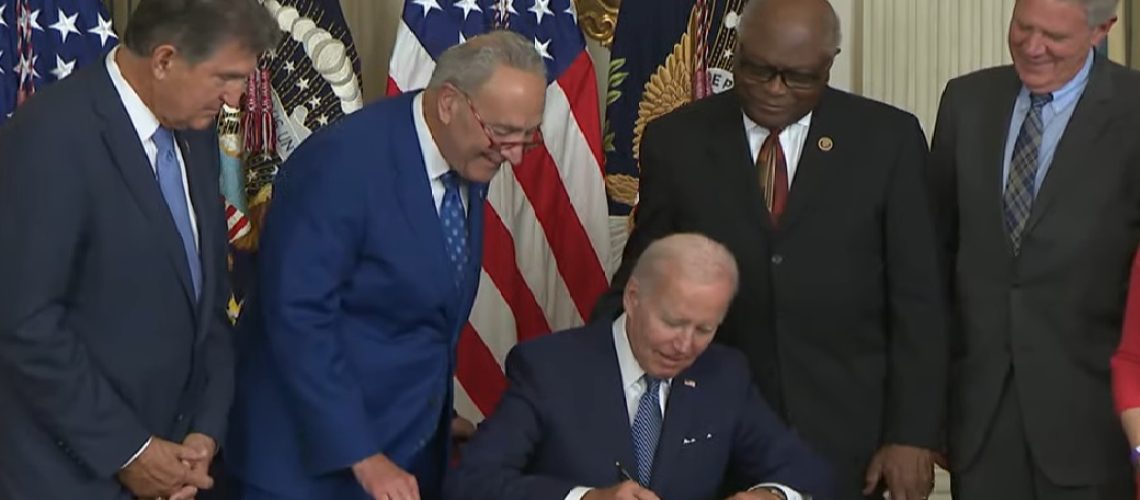David Burton, attorney with Norton Rose Fulbright and specialist in energy tax law, looks at tax credit transfer, domestic content, energy communities, prevailing wage and more.
It has been two years since the passage of the Inflation Reduction Act of 2022 (IRA), and like any complicated and multi-faceted policy, the IRA is a mixed bag of successes and failures. Let’s start with the successes.
The IRA created a tax credit transfer market, and it is thriving. Our firm has closed almost $5 billion in tax credits transfers across over 40 deals. For our deals, the high price is 97 cents on the dollar and the low is 83 cents on the dollar. Much of the difference in price depends on the quality of the indemnity that backstops the buyer’s purchase of the tax credits. The high end of the range has investment grade indemnitors/guarantors or a tax credit insurance policy, while the low end of the range has an unrated indemnitor that is not backstopped by tax credit insurance.
The Treasury issued final regulations about tax credit transfers, but “the credit” really goes to Senator Joe Manchin (I-WVa) who decided that such things were better handled by the private sector than the IRS. In contrast, the activity around “direct pay” (i.e., a refund from the IRS) for tax-exempt project owners, clean energy component manufacturers, carbon capture and hydrogen projects is anemic. The eligible participants are, generally, avoiding direct pay due to concerns about the time it will take the IRS to process the direct pay requests and potential haircuts.
Tax credit transfers have been a success despite Treasury’s regulations consistently favoring tax policy over stimulating clean energy. Examples of that include the approach to the passive activity loss rules that limit the ability of individuals to buy tax credits that is even stricter than the passive activity loss regulations themselves: the transfer regulations preclude an election to “group” hours for an individual to reach the active threshold, while the passive activity loss regulations actually allow such an election for activities the combination thereof is an “appropriate economic unit.”
Further, Treasury’s regulations prohibit combining a lease pass-through (also known as an inverted lease) investment tax credit election with transferability (or direct pay), even though that election is provided for in the tax code.
The other gaps in the Treasury regulations are (i) that we don’t know whether the IRS is going to audit tax credit buyers or sellers (sellers make more sense, but buyers have the money) and (ii) we don’t know whether transaction costs for tax credit transfers are deductible.
Further, Treasury’s online registration portal is backed up, and Treasury is telling registrants that it can’t process registrations for 2024 until October because it has 2023 registrations it needs to process before the extension the buyers and sellers of tax credits that accrued in 2023 have to file their 2023 tax returns are up in September for partnerships and October for corporations. The resourceful tax credit transfer industry is finding ways to work around these issues.
A related goal of the IRA was to democratize tax equity. The IRA has made progress in that direction but has not fully succeeded. Thinly capitalized solar developers may be able to access the tax credit transfer market after paying a tax credit insurer, a tax credit transfer broker, a law firm and for investment credit deals, an appraiser. While well-capitalized solar developers can probably pull it off with a law firm and for investment credit deals an appraiser. Thus, the well-capitalized developers likely raise five cents or more on the dollar versus their thinly capitalized competitors. It may sound small, but over time it compounds and leaves the well-capitalized miles ahead.
The 10% tax credit adder for projects built in “energy communities” appears to have been mostly successful. For the most part, developers are able to determine whether their projects qualify for that adder and are able to monetize the adder in the tax credit transfer market. This is due to Treasury publishing guidance that is relatively clear and based on objective standards. Further, we are seeing projects developed on closed coal sites and in communities with a history of significant fossil fuel employment.
At the moment, the 10% domestic content tax credit adder is a split decision. The domestic content adder appears to have spurred the construction of a flurry of factories making solar modules and batteries, but most of those factories are not online yet.
Treasury’s original guidance on the domestic content adder was unworkable. To address that safe harbors were promulgated for solar, onshore wind and batteries. The safe harbors for solar and onshore wind seems to be viable. There is some cautious optimism about the safe harbor for storage. Technologies like geothermal heat pumps, fuel cells, renewable natural gas and offshore wind do not currently have a safe harbor and find themselves unsure about how to determine eligibility for the domestic content tax credit adder.
IRA failures
Grab a stiff drink and let’s turn to the IRA’s failures. First, based on anecdotal evidence, the prevailing wage and apprentice rules are not creating much value for the nation. Most folks building solar projects are already being paid wages not much different than the Department of Labor’s prevailing wage due to a tight market for skilled labor. Therefore, the prevailing wage rules are burdening the solar industry with concerns about a foot fault in their record-keeping resulting in large penalties or worse yet a reduction in the tax credits a project is eligible for by 80%, while not stimulating higher wages for skilled tradesman needed to build solar and other clean energy projects. It has created a cottage industry for consulting and accounting firms to verify the appropriate wages are being paid, but the nation was already facing a shortage of accountants. Let’s not even discuss the shortage of tax lawyers.
In terms of apprentices, it appears most projects are qualifying for an exemption from the apprentice requirements because apprentices are not available. Therefore, the well-intentioned rules do not appear to be spurring America’s young people to forego video games for learning a trade. Thus, the apprentice rules create a concern for project developers and their contractors about a costly tax credit foot fault while not spurring a renaissance in the trades. If solar and the other clean energy technologies are needed to save the planet from climate change, should we be burdening projects deploying these technologies with cumbersome requirements that are not resulting in more skilled tradesmen?
Finally, there are the proposed investment tax credit regulations. Those regulations fail to clearly answer some basic questions the industry has been asking for years like how much of a solar parking canopy qualifies for the investment credit. Further, Treasury has gone out on a limb requiring all equipment integral to a project to have a common owner and only allowing tax credits for repairs and upgrades if less than 20% of the improved project has its origins in the original equipment.
However, the investment credit regulations appear to have what is something of an unexpected gift. The Department of Energy (DOE) seems to have prevailed upon the Treasury to broadly interpret the rule about the investment credit for interconnection costs. The apparent motivation for this is to spur improvements to the nation’s anachronistic grid.
The statutory allowance for the investment credit on interconnection costs has a 5 MW capacity threshold. However, the proposed regulations appear to say that threshold is applied at the inverter level for solar and the turbine level for wind. For instance, it appears that a solar project that most industry participants would say has 200 MWs of capacity (i.e., it exceeds the 5 MW threshold) would qualify, so long as no inverter is serving 5 MW or more (e.g., there are 50 inverters each serving 4 MW). This interpretation appears to have been confirmed by the proposed section 48E regulations (i.e., the tech neutral investment credit). However, many law firms’ tax opinion committees are by nature conservative and are waiting to bless “will” level opinions under the traditional section 48 until Treasury confirms the favorable interpretation in the final section 48 regulations.
The implementation of the IRA has resulted in a range of policies outcomes. However, as is usually the case, the nimble and creative have faired well, while concerns about whether the nation is doing enough to address existential threat of climate change remain unabated.
David Burton is a partner at Norton Rose Fulbright. He advises clients on a wide range of U.S. tax matters, with an emphasis on project finance and energy transactions. He has extensive experience structuring tax-efficient transactions for wind and other renewables with particular expertise with respect to flip partnerships and sale-leasebacks. Earlier in his career, David was the managing director and senior tax counsel at GE Energy Financial Services (GE EFS) where he oversaw all of the tax aspects for more than US$21 billion in global energy projects.
Popular content




